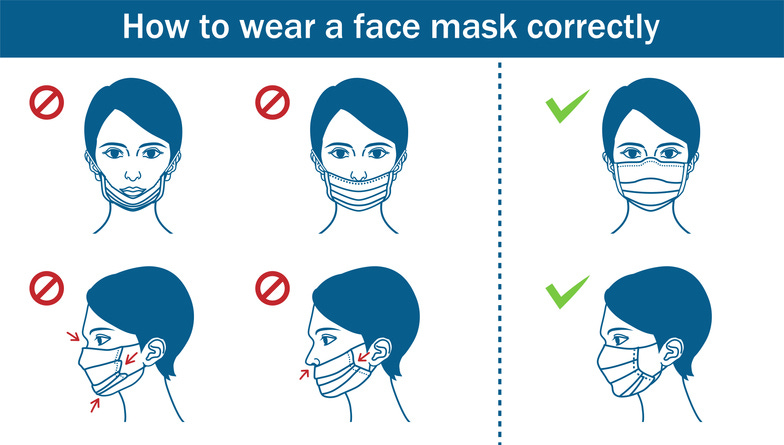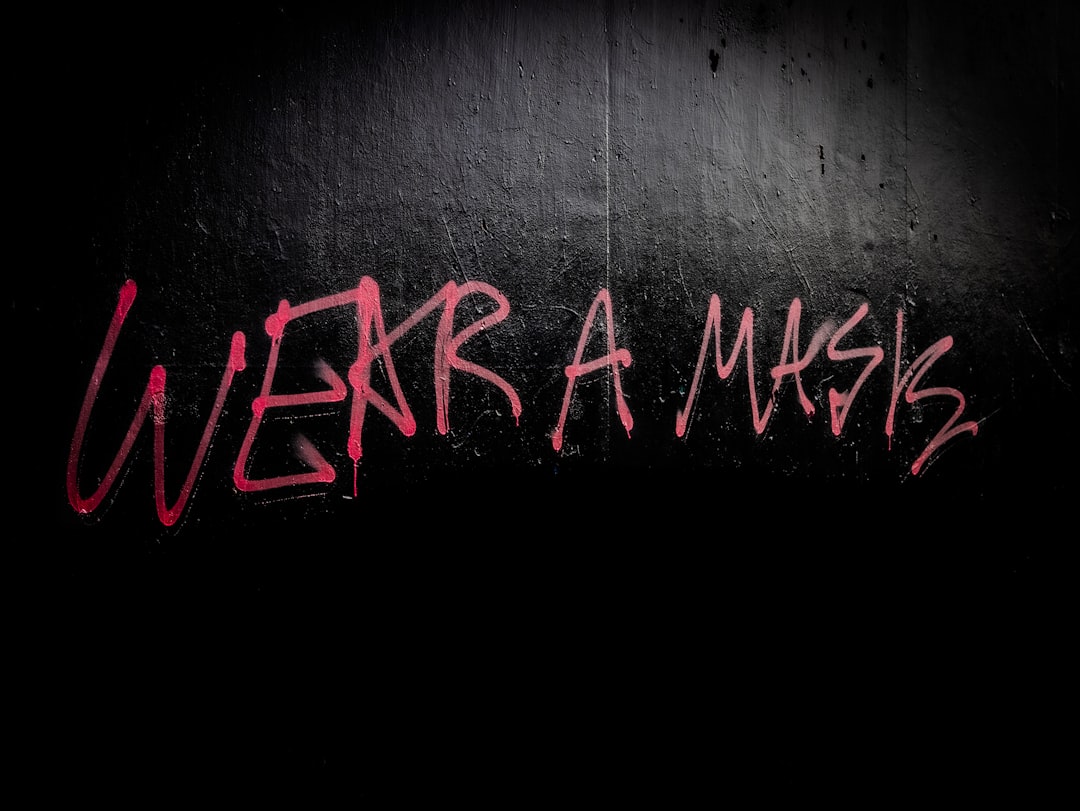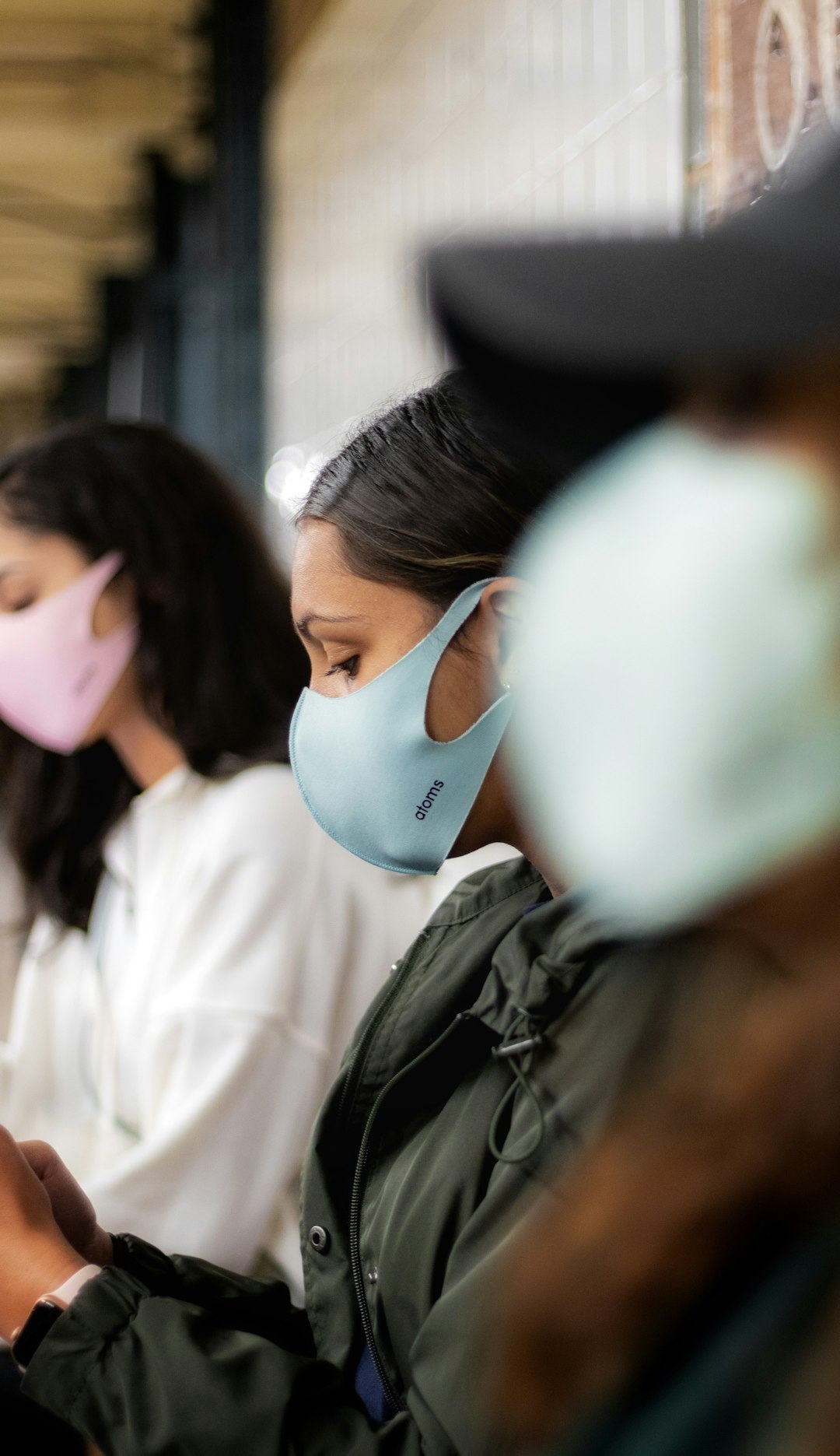The Medium is the Mask-age

There won't be one way to be after the pandemic, because there was no one way to be before it - and certainly not during it. Masks are just one example.
We’re in that in-between space, again, which seems to come just before a new wave of a COVID variant, or just as the weather is warming up, in which everyone is thinking about a “post-pandemic” way of being. Think pieces and research reports and trend studies try to extrapolate from behavior observed “during” the pandemic what will be different “after” the pandemic and what will “go back to normal.” I’m using a lot of quotation marks here, because objectively, the pandemic is not over, and realistically, anything that “goes back to normal” will be forced back to “normal” by those who have the most to gain from restoring some semblance of the status quo ante.
So while we’re listening and watching as people try to puzzle through what will be different when the pandemic ends — whenever that may be — we thought we would take a moment to simply ponder the humble mask.

Masks are not simply effective protection against airborne illness or noxious particulates — they are highly symbolic objects. They carry the freight of culture, and politics, of public trust and expertise, of status, and of intentions. They have stories — and we think it’s worth understanding the stories of masks, as much as it is worth examining the efficacy of different materials.
The earliest masks were literally used for storytelling — for communicating with the spirit world, for transforming the deceased from a corporeal form to a celestial one. Used in religious rites and ceremonies, and then in theater and dance, masks transform the face of the person wearing it, and allow the person looking at that face to be transported into a different realm, where everything is heightened, and gods and monsters are utterly normal.
Masks were also used to disguise the wearer — for fun, as in Carnival celebrations or modern day Halloween, and allow us to collapse social status, to conceal our socially constructed identities and be … whoever the mask says we are. But sometimes the disguise is meant simply to conceal the identity of the wearer, or to blend in with surroundings when you are trying not to be seen. Soldiers wear masks as part of their camouflage to go undetected by enemy forces, and criminals might wear masks to avoid being identified by witnesses or police.
Masks have also been used as protection — for knights in battle, police in riot gear, gas masks during chemical exposures and attacks, athletes on the field of play, or construction workers around dust and other chemicals. Masks can deliver medicine - think of oxygen masks, CPAP machines, nebulizers. And they can protect us from illness and promote hygiene, as in a doctor’s surgical mask, or the ordinary masked Tokyo commuter who has a little cough.
And they’ve been used as a form of punishment or torture — shame masks and scold’s bridles were there to tell the community your sins and force you to endure both social shame and physical pain.
Masks are also a hallmark of comic book vigilantes/super heroes — Batman’s cowl, Spider-man’s mask. (Superman takes off Clark Kent’s glasses to transform into his super self, since the ordinary guy is his disguise.) In one comic book universe or multiverse, the masked person with powers is regarded with some suspicion, both by the powers-that-be, and by those the vigilante-hero is meant to protect, because of course he can never protect everyone. In another universe/multiverse, the masked person with powers is a hero, someone you want to take a selfie with, someone the government trusts, more or less, and someone who never seems to mourn those he doesn’t save.

When we talk about so-called mask mandates, we’re bringing all of this cultural heritage, and all of these stories to bear. It matters who is wearing the mask and where they are wearing it. Before the pandemic in the US, your doctor would wear a mask in a surgical setting, but not in an ordinary office visit, and definitely not at the grocery store. Before the pandemic in the US, people regularly went to work, to the gym, to school, to the shops, to restaurants and bars and parties and nightclubs and concert halls even when they were sick — and did not wear masks. Before the pandemic in the US, we spoke of ‘sick buildings’, and accepted that kids bring home colds and flus to their elders, and that windows in tall buildings can’t be opened.

As the pandemic was beginning, and masks were both in dispute and being adopted, certain groups of people did not feel safe wearing masks — Black men in particular felt they could not enter an ATM lobby or a bodega wearing a mask and not be perceived as a potential thief, and therefore in danger of police violence. Asian people wearing masks were harassed on the subways, called racist slurs, and suspected of purposely ‘bringing’ the virus to America. Deaf and hard of hearing people could not read lips that were covered by a mask. People with breathing problems worried that the mask could be bad for their condition.
It was also a matter of status early in the pandemic — who could get their hands on masks of any kind, who could make their own masks, who had N95s or equivalents, who could tell a counterfeit from the real deal. Today I have three boxes of KN95s in my house and the thing that’s hard to get are at-home COVID tests, but in the beginning you couldn’t buy any kind of mask at hardware stores and pharmacies, you couldn’t get hand sanitizer or Lysol — never mind the toilet paper shortages, people were hoarding the necessary tools for our collective safety, and our supply chains were not set up to meet the demand, what supplies were in a collective reserve were often too old to be relied upon, regulations restricted what supplies were acceptable in hospital environments, leading doctors to wear the same N-95 masks over and over again, carrying them in brown paper bags and coming up with ways to keep them clean.
Of course, that was 2020, and now it’s 2022, and everyone’s talking about the “post-pandemic period”. So why do masks still matter? Because these objects have almost too many stories associated with them — transformation and transcendence, entertainment and disguise, punishment and protection. We haven’t agreed on the story of the mask in our society. It could have been this wonderful symbol of mutuality and community — that I care about your well being and mine, that I can protect us both with this one simple thing. But instead it is shrouded in stories of scientific uncertainty, political polarization, class and race disparities.
Some of us will continue to wear masks — anywhere you’re enclosed with other people you don’t know for an extended period of time, anytime you feel a bit under the weather but have to leave the house anyway. Some of us roll our eyes at a “Masks Recommended” sign on the door of the grocery store. Some of us who are immunocompromised will have to continue to wear masks until this danger truly has passed, will have to wonder how long that will take, and will have to endure social disapproval or harassment for the choices they make. The disagreement about the story — that’s the “normal” we’ll return to when this is “over”.
As we continue to think about how the pandemic is changing us, we’re going to examine it in this newsletter through the frame of these ‘artifacts’ of the pandemic — the objects, ideas, phrases, and symbols that we’ve all been reckoning with for the last two-plus years. It’s a bit of an exercise in semiotics, a bit in ethnography, and a bit returning to the recent past to see how things started, and well, how they’re going. Got a suggestion for a pandemic ‘trope’ to examine? Hit reply and tell us about it.
That’s it from me, Farrah… but:
While we’re on the subject, here’s what Nic and Ashley found as we were preparing this installment:
From Ashley:
A few months into the pandemic, a journalist in Canada published this piece which explores the complexity that has come with (medical) mask wearing. Canada is our US neighbor, and many things there are very similar to here, yet many things are very different. It’s interesting to look back at this article after 2 years of the pandemic, and a lot of the controversy still exists. I can’t help but wonder how this point in time will be written into mask history!
And then Nic found this amazing article titled “Mask Wearing as Cultural Behavior: An Investigation Across 45 States During the COVID-19 Pandemic”. As he put it, the piece feels “feels very in-conversation with” this idea of competing stories and contexts being brought to the mask and other COVID artifacts. The researchers modeled mask wearing individually and at a state level, and looked at factors including individualism-collectivism, independent v. interdependent ideas, tightness-looseness frameworks, honor cultures, and political orientation. Which really brings to life some of the themes we touched on up above!
That’s it from us this month — get in touch with your feedback, we love to hear from you.

